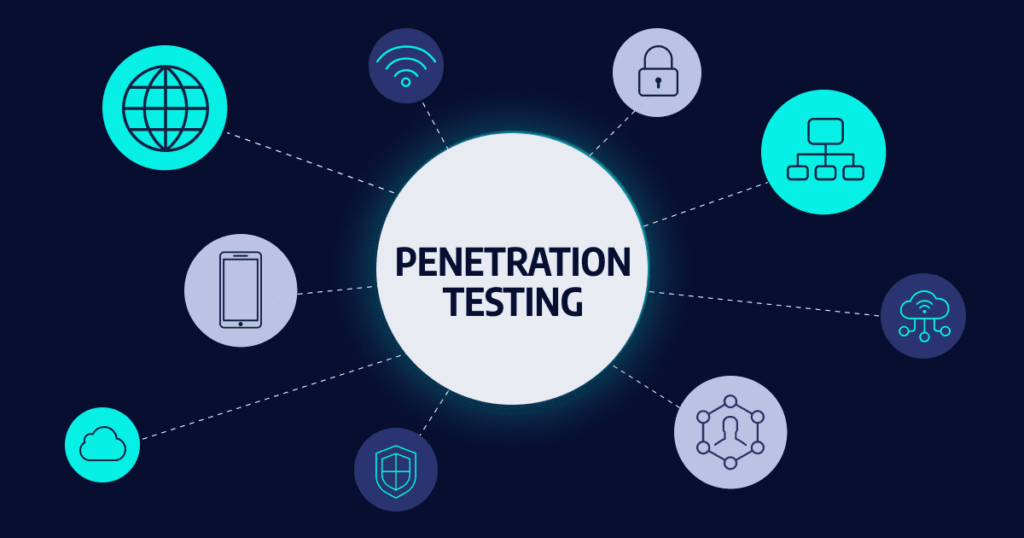Have you ever wondered how companies secure their digital fortress from cyber threats?
Cyber-attacks are becoming more sophisticated every day. Understanding and using the different types of penetration testing is crucial.
In this blog, we'll dive into the types of penetration testing. We'll discuss its importance and cover methods to safeguard businesses.

What is Penetration Testing?
Penetration testing, or ethical hacking, simulates cyber attacks to find system vulnerabilities.
The goal is to test your digital defences for weaknesses. This helps identify vulnerabilities before hackers attack.
Ethical Hacking and Security Testing Methodologies
Ethical hacking is at the heart of penetration testing, where testers adopt a hacker's mindset to uncover vulnerabilities.
Ethical hackers use security testing methodologies to identify and reduce risks for robust security.
Vulnerability Assessment vs Penetration Testing
While often mentioned together, vulnerability assessments and penetration testing serve different purposes.
A vulnerability assessment is the process of finding, ranking, and categorizing vulnerabilities within a system to address them. Vulnerability assessments are a very weak form of security auditing because they rely on automated tools, which are notorious for their false positives (fake findings, which waste your time and money) and false negatives (missed vulnerabilities).
Penetration testing exploits vulnerabilities to test security measures. It assesses real-world security effectiveness and is a process performed at least in part by experienced professionals, which ensures less missed vulnerabilities and zero false positives (fake findings) in a report.
Why Penetration Testing is Essential
The importance of penetration testing cannot be overstated. It helps identify vulnerabilities and formulates a strategic response to mitigate threats.
Understanding various penetration testing types is the first step to secure your digital assets.
The goal is to identify vulnerabilities before they can be exploited. You can test web applications, networks, or other methods.
Types of Penetration Testing
- Web Application Penetration Testing. This type of testing scrutinizes the security of web applications. It uncovers issues like SQL injection, cross-site scripting, and flaws in security settings. A thorough web app penetration test can safeguard your apps from outside threats.
- Mobile or Desktop App Penetration Test. Securing mobile and desktop applications is paramount with the increasing use of mobile and desktop applications. This testing identifies vulnerabilities in applications running on various devices.
- Cloud Audit or Cloud Penetration Test. In today's day and age, where everything tends to deployed to AWS, Azure, Google Cloud Platform (GCP), Kubernetes or Docker, whether with or without Infrastructure as Code such as Terraform, it is of paramount importance to audit the security of the cloud configuration to ensure there are no unintended security vulnerabilities that allow some docker read-only user to escalate privileges to AWS admin, for example.
- Network Penetration Testing. Network penetration testing aims to discover security weaknesses within your network setup. It assesses firewalls, routers, switches, and the security policies that govern network access. This testing ensures that the internal network is secure against attacks. This may be performed from an internal perspective (aka "Assumed breached") or an external perspective (discovering and targeting what is reachable from the internet).
- Social Engineering Tests. Social engineering tests check the human element of security. Testers use phishing, baiting, or pretexting to manipulate individuals to try and compromise security protocols. It highlights the need for robust security awareness training among employees. This may be part of an external penetration test and may also be called "red teaming".
- Wireless Security Assessment. This assesses the security of wireless networks. Testers search for vulnerabilities to prevent unauthorized access to wireless networks. They aim to stop attacks such as eavesdropping and data theft.
- Internal and External Penetration Tests. Tests assess security posture from within or outside the organization. Internal tests mimic inside attacks. External tests simulate attacks by external threat actors.

7ASecurity offers top-notch penetration testing services to protect businesses from cyber threats.
By understanding the diverse array of penetration testing types, companies can take a proactive approach to resolving cyber threats.
Ready to fortify your digital defences?
Visit 7ASecurity to learn about their services and how they can secure your operations from cyber threats.

